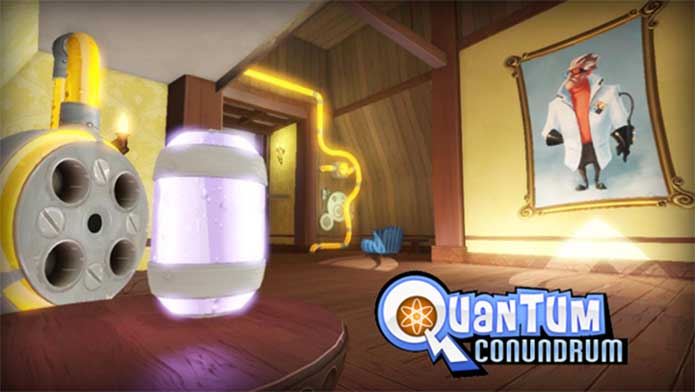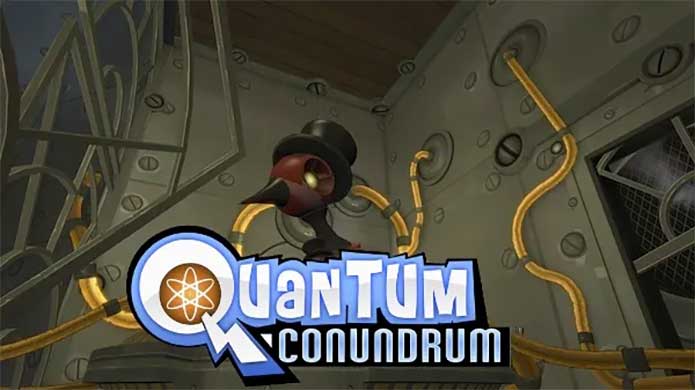Quantum Conundrum is one game every player looking to have fun should check out. While multiple reviews state it’s like Valve’s Portal, the Airtight Games title offers unique standout features. The challenge is “mind-bending,” with goofy stages for more entertainment.
Some reviews consider it to be a mirror of Portal. A further consideration is that Kim Swift, the director, was also a lead designer at Valve. Yet, this title has had several successes, and our article discusses the reasons for the high ratings from major critics.
Game’s Eminent Developer
Airtight Games is an American-based video game development company. It has operated out of Redmond, Washington, since 2004. It consists of previous staff at Microsoft, Will Vinton Studios, and FASA Studio. As an independent developer, it has some credits for titles with praise from critics. Most of its praise is for the style and flow of all productions.
The core team at Airtight Games was responsible for releasing Dark Void (2010), published by Capcom and available on PlayStation 3, Xbox 360, and Microsoft Windows. The developers were responsible for the Xbox title Crimson Skies: High Road to Revenge.
There’s little doubt about its experience after releasing Quantum Conundrum in 2012. Square Enix – mostly famous for creating the iconic Final Fantasy game franchise – published it, and its success saw the rise of other mobile-based titles for iOS. Airtight Games is also responsible for Murdered: Soul Suspect, which is available on multiple consoles. The team comprises big names in video gaming development like Jim Deal, Matt Brunner, Jared Noftle, and Ed Fries.
Quantum Conundrum Story
 It is a well-written and exceptional title that balances complication and entertainment. Several reviews show what exceptional details Airtight Games has put into the title to provide a standard balance for gamers. One of the reasons why the Quantum Conundrum game is so successful is how the design team curates a puzzle platform for an inquisitive mind. It allows all seasoned and passive gamers to get their money’s worth. You won’t be out of place to liken it to the unpredictable nature of casino gaming.
It is a well-written and exceptional title that balances complication and entertainment. Several reviews show what exceptional details Airtight Games has put into the title to provide a standard balance for gamers. One of the reasons why the Quantum Conundrum game is so successful is how the design team curates a puzzle platform for an inquisitive mind. It allows all seasoned and passive gamers to get their money’s worth. You won’t be out of place to liken it to the unpredictable nature of casino gaming.
The story is first-person, involving solving scientific riddled puzzles to win. It revolves around a nephew who must learn to save his uncle locked in an alternative dimension due to an experiment gone wrong. Although the professor suffers from short-term memory loss, he can communicate with the player. Another side effect of the failed scientific journey is dividing the house into four dimensions, including physical properties.
- Fluffy dimension: objects are 10x lighter than usual, allowing users to carry unfixed boxes.
- Heavy dimension: objects are 10x heavier than regular ones. The density of these properties lets players hide from laser beams.
- Slow motion dimension: time crawls 10x slower than usual but does not affect the player.
- Reverse gravity dimension: time moves 10x faster than usual. Like slow motion, the feature does not influence the gamer.
To solve the task, the child (main character) must restart three generators in the house to upset the dimension holding his uncle captive. The play engages when the nephew passes through different rooms and solves brain-wracking puzzles to kickstart each generator. The gamer’s ultimate goal is to reach each room’s exit by activating some switches to make it available.
Solving the puzzle involves moving around objects (boxes) in different dimensions. The main task is using unique solutions to stack the properties or the weights to activate certain pressure plates. However, the user has the interdimensional shift device (glove), which the professor helps to move through one at a time. It also gives room to solve some puzzles.
The player needs to maintain the glove’s battery health to survive. It forms part of the puzzle to solve. If the glove’s power dies, the character could fall into bottomless pits, hit by laser beams, enter toxic liquids, or slip from a considerable height.
To make the game more interesting, the player gets help from IKE, a creature his uncle got after his travels. If the user succeeds in restarting three generators, the house shakes. Still, his professor’s uncle remembers a tiny piece of information: there’s a fourth generator to restart before releasing him. However, as the character tries to kickstart the last device, he remembers it is life-threatening and has to escape to the pocket for safety. Yet his nephew starts it, but the house shakes violently, putting the protagonist’s life in danger. The uncle immediately instructs the protagonist to locate the pocket dimension. He allows him to rework the problem and find solutions.
Main Characters
The main character is a 12-year-old child who will stay with his uncle, the intelligent professor Fitz Quadwrangle (played and voiced by John de Lancie). However, he is working on a long ground-breaking experiment, making him unprepared for the nephew’s arrival.
Professor Fitz Quadwrangle is the second main character. The game’s plot suggests he is to become the protagonist’s new guardian but is in an experiment. Quadwrangle also gets IKE as a companion, which helps the protagonist navigate through different puzzles, get the glove, and restart the four generators.
Unique Features and Activities
 According to expert reviewers, the $15 price tag for a downloadable title with several features that the game carries is a huge steal. The activities, rewards for passing, and consequences for failing make it a top title from Airtight Games. Here are some exceptional characteristics that led the Quantum Conundrum to success.
According to expert reviewers, the $15 price tag for a downloadable title with several features that the game carries is a huge steal. The activities, rewards for passing, and consequences for failing make it a top title from Airtight Games. Here are some exceptional characteristics that led the Quantum Conundrum to success.
Switching Between Dimensions
Playing the game requires the user to be proactive in thinking of solutions. One of them is using the glove feature to jump through dimensions. For instance, the nephew can use it to pick a heavy object in the fluffy dimension, toss it to a new platform, and switch to slow motion. The character gets enough time to jump on the box and swing through gaps.
Solving Puzzles
Another inspiring trick is using a puzzle platform as a genre. Players must combine their intellectual abilities to solve numerous tasks to restart the generators. It requires the character to manipulate the objects in the room via the four dimensions. This exceptional tactic appeals to everyone who needs non-combative entertainment games. Some critics believe Kim Swift attempts to replicate Portal on Airtight Games’ production. Yet, Quantum Conundrum’s successes come with the exciting puzzle adventure within a budget.
Quantum’s Soundtrack
Speaking about Quantum Conundrum’s soundtrack, it is a 13-track album composed by Chris Ballew. The lead singer of the Presidents of the United States of America performed all the songs too. Its cover references the “Nevermind” from the 1991 Nirvana album.
Wrap Up
Quantum Conundrum is an impressive game in the puzzle genre. The idea is to offer a non-combative title for players curious enough to reach the end line and rescue the witty professor. For downloadable content at $15, success comes from being affordable to many gamers.
Don’t mistake the Quantum Conundrum for a mental test, though. Getting the solution is less than 50% of the total game challenge. One half is for the tough chambers, and the others are for the perfectly timed jumps and moving past each dimension shift. The title is pleasing to the eye, especially the graphics. Combine this with the soundtrack from Chris Ballew, and you have a game that offers a healthy challenge in a fun and non-combative way.


 by Symphonie
by Symphonie